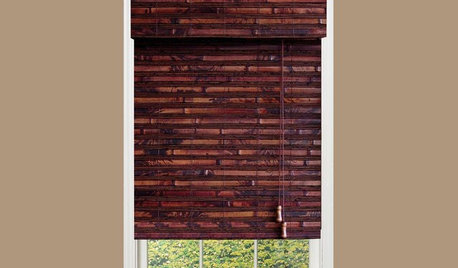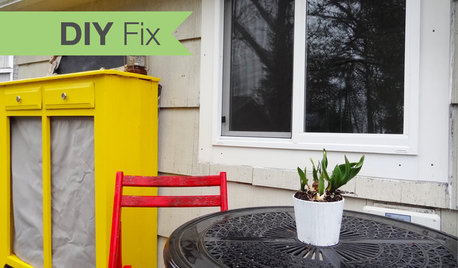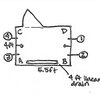Replace Whole Pipe
Tissa
12 years ago
Related Stories

KITCHEN DESIGNKitchen of the Week: A Burst Pipe Spurs a Makeover
Once dark and clunky, this compact kitchen in a 1962 ranch is now light, bright and cheerful
Full Story
GREAT HOME PROJECTSHow to Replace Your Lawn With a Garden
New project for a new year: Lose the turfgrass for energy savings, wildlife friendliness and lower maintenance
Full Story
PRODUCT PICKSGuest Picks: A Whole Lotta Wonderful Window Coverings
Blinds, drapes, shades and curtain rods to give your windows a polished, put-together look
Full Story
REMODELING GUIDES10 Tips to Maximize Your Whole-House Remodel
Cover all the bases now to ensure many years of satisfaction with your full renovation, second-story addition or bump-out
Full Story
HOUZZ TOURSHouzz Tour: A Single Painting Births a Home's Whole Palette
The colors in this Netherlands home are picture perfect, with paint, furnishings and accessories to match a beloved piece of art
Full Story
PRODUCT PICKSGuest Picks: Pipe Up for a Crisp Look
Talk about tailored — piping offers a bespoke look even on ready-made furniture and pillows
Full Story
ARCHITECTURECylinders — More Than Architects’ Pipe Dreams
They may look fanciful, but cylinders can serve practical purposes in architectural designs
Full Story
REMODELING GUIDESReplace vs. Restore: The Great Window Debate
Deciding what to do with windows in disrepair isn't easy. This insight on the pros and cons of window replacement or restoration can help
Full Story
Replace Your Windows and Save Money — a How-to Guide
Reduce drafts to lower heating bills by swapping out old panes for new, in this DIY project for handy homeowners
Full Story
MOST POPULARKitchen Evolution: Work Zones Replace the Triangle
Want maximum efficiency in your kitchen? Consider forgoing the old-fashioned triangle in favor of task-specific zones
Full StoryMore Discussions









User
lazypup
Related Professionals
Channahon Handyman · Forest Hill Kitchen & Bathroom Remodelers · Athens Kitchen & Bathroom Remodelers · Brentwood Kitchen & Bathroom Remodelers · Charlottesville Kitchen & Bathroom Remodelers · Fair Oaks Kitchen & Bathroom Remodelers · Honolulu Kitchen & Bathroom Remodelers · Honolulu Kitchen & Bathroom Remodelers · Placerville Kitchen & Bathroom Remodelers · Sun Valley Kitchen & Bathroom Remodelers · Tulsa Kitchen & Bathroom Remodelers · Upper Saint Clair Kitchen & Bathroom Remodelers · Vienna Kitchen & Bathroom Remodelers · Hawthorne Kitchen & Bathroom Remodelers · Glenn Heights Kitchen & Bathroom RemodelersTissaOriginal Author
User
lazypup
alphonse
brickeyee
asolo
brickeyee